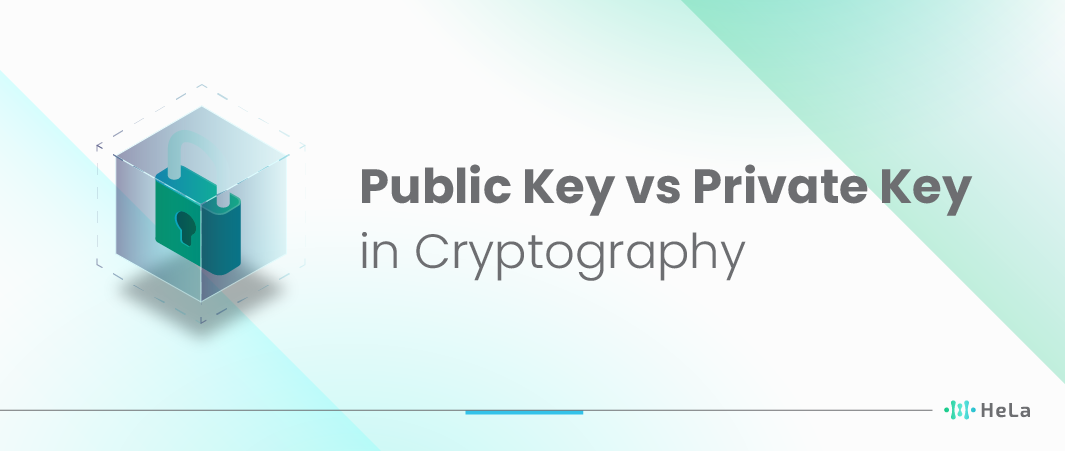In the world of digital security, nothing’s quite as fundamental as public key vs private key. These two crucial components form the backbone of various security systems, from safeguarding your emails to ensuring the authenticity of digital signatures. Yet, grasping their roles and telling them apart can often be a head-scratcher. In this article, we’ll delve into the ins and outs of public key vs private key, breaking down the differences and similarities between them to help you better understand these essential tools.
At its core, the public key vs private key concept is all about safeguarding information. Imagine it like a lock and key scenario: the public key is like a lock that’s visible to everyone, and the private key is the unique key that opens that lock. When you want to send someone a secure message or data, you use their public key to encrypt it, ensuring only they can decrypt it using their private key. It’s like sending a padlocked box; only the recipient has the right key to unlock it.
But here’s the crucial part: never share your private key with anyone. It’s like handing over your house keys to a stranger – it compromises your security. The public key, on the other hand, can be freely shared without putting your data at risk. So, understanding the public key vs private key dynamic is paramount in navigating the world of digital security.
What are Public and Private Key?

Before delving into the specifics, it’s crucial to establish a foundational understanding of these keys. At the heart of cryptography, both the public and private keys function together to ensure secure communication over untrusted networks, like the internet.
Public Key
A public key is like a special lock that anyone can see and use. It’s often used to keep data safe by turning it into a secret code. When you use a public key to lock up your information, only the private key, its secret partner, can open it up again. This is what makes the public key vs private key relationship so important for keeping things secure.
Imagine the public key as a padlock on a treasure chest. You show the padlock to everyone, and they can use it to lock things in the chest. But only you, with the private key, can unlock the chest and access the treasure. It’s like having a one-way lock and a special key that works only in one direction, keeping your secrets safe from prying eyes.
So, in the world of encryption, the public key is the lock everyone can see, and the private key is the secret key to unlock it. This combination is vital for protecting information in a way that’s easy to understand and use.
Private Key
A private key is like your secret password in the digital world. It’s a key that you should never, ever share with anyone you don’t fully trust. One of its main jobs is to unlock data that’s been locked up using its partner, the public key.
But here’s the twist: your private key doesn’t just open locks; it also proves who you are in the digital realm. It’s like your digital signature, saying, “Hey, it’s really me!” So, when we talk about public key vs private key, the public key is the one everyone knows, while the private key is your secret digital identity card. It’s crucial to keep it safe and hidden, just like you would with your bank PIN.
So, to sum it up, your private key is your super-secret digital key that unlocks stuff and proves who you are. Remember, it’s your digital identity, so guard it like your most prized possession!
Also Read: Soft Fork vs. Hard Fork: An In-Depth Comparison
The Role of Public and Private Key in Encryption

Encryption is the practice of transforming data into a code to thwart unauthorized access. The duo of public and private keys plays a pivotal role in this realm, providing a robust framework for secure communication and data protection.
Asymmetric Encryption
This is where our two heroes, public and private keys, shine. When it comes to securing information, asymmetric encryption is a powerful technique. In this process, a message intended for a recipient is encrypted using their public key.
The public key is freely available to anyone, making it possible for anyone to encrypt a message intended for the recipient. However, the real magic happens when the recipient receives the encrypted message. They use their private key, which is kept secret, to decrypt the message.
This process ensures that even if the message is intercepted during transmission, it remains unreadable without the correct private key. Essentially, the public key acts as a one-way door, allowing information to be locked securely, with only the recipient holding the key to unlock and access the data. This cryptographic technique underpins the security of various online communications, including email, web browsing, and online banking.
Digital Signatures
Beyond encryption, private keys are also employed to sign digital messages. Digital signatures serve a critical purpose in verifying the authenticity of messages or documents and confirming that they have not been tampered with during transmission. Here’s how it works: when a sender wants to digitally sign a message or document, they use their private key to create a unique signature for that specific piece of data.
The recipient can then use the sender’s public key to verify the authenticity of the message and ensure it came untampered from the claimed sender. If the message has been altered in any way, the digital signature will not match, indicating that the content is no longer reliable.
Public and private keys are essential components of encryption that enable secure communication and data protection through techniques like asymmetric encryption and digital signatures. They form the foundation of modern cybersecurity, ensuring the confidentiality, integrity, and authenticity of digital information in an increasingly interconnected world.
Advantages of Public and Private Key Systems

Why use a system based on both public and private keys instead of simpler, single-key methods? The benefits are manifold:
Enhanced Security
Public and private key systems provide a higher level of security compared to single-key methods. With a single key, if it falls into the wrong hands, your entire security is compromised. In contrast, in a two-key system, the private key remains confidential and never leaves the secure environment, reducing the risk of unauthorized access.
Authentication
Public key cryptography enables strong authentication. When someone uses their private key to sign or decrypt data, it proves that they possess the private key, establishing their identity. Conversely, anyone can verify the authenticity of the sender using the sender’s public key.
Non-repudiation
The use of public and private keys allows for non-repudiation. This means that a sender cannot deny sending a particular message or transaction since their private key was used to sign it. This feature is crucial in legal and financial transactions.
Key Distribution
Managing and distributing single keys securely can be challenging. In a public and private key system, you only need to distribute public keys, making it easier to share encryption capabilities without compromising the security of sensitive data.
Scalability
Public key systems are highly scalable. Adding new users or devices to a network doesn’t require a significant reconfiguration of the system. You simply share the new user’s public key, and they can securely communicate with existing users.
Forward Secrecy
Public and private key systems provide forward secrecy, meaning that even if an attacker gains access to the private key of a user or session, they cannot retroactively decrypt past communications. This is because the private key is not used for encryption; it is only used for decryption and signing.
Key Revocation
If a private key becomes compromised or if a user’s authorization needs to be revoked, you can simply revoke the associated public key, rendering the private key useless for any further transactions or communications.
Encryption and Digital Signatures
Public and private key systems allow for both encryption and digital signatures. Encryption secures the confidentiality of data, while digital signatures verify the integrity and authenticity of the sender.
Versatility
These systems are versatile and find applications in various fields, from secure communication and data protection to secure e-commerce transactions and secure remote access to networks.
Potential Vulnerabilities and Challenges
Public and private key systems, often used in cryptography and secure communication, are generally robust and effective for securing information. However, they are not without their vulnerabilities and challenges. Here are some potential vulnerabilities and challenges associated with public and private key systems:
1. Key Management
- Key Generation: If the keys are not generated securely, they can be compromised. Weak random number generation can lead to predictable keys.
- Key Storage: Safeguarding private keys is crucial. If they are not properly stored and protected, they can be stolen or lost.
2. Key Distribution
- Transmitting public keys securely is essential. An attacker could intercept the key exchange and replace it with their own public key, enabling them to decrypt or manipulate the communication.
3. Quantum Computing Threats
- Quantum computers have the potential to break many of the cryptographic algorithms that are currently considered secure, including those used in public and private key systems. This poses a long-term threat to the security of encrypted data.
4. Brute Force Attacks
- As computational power increases, the time it takes to conduct a brute force attack on a private key decreases. Longer key lengths are required to resist these attacks.
5. Key Compromise
- If a private key is compromised, all data encrypted with it becomes vulnerable. Proper procedures for revoking and replacing keys are essential.
6. Side-Channel Attacks
- Attackers can exploit side-channel information like power consumption or electromagnetic radiation to deduce private key information.
7. Vulnerabilities in Cryptographic Algorithms
- Flaws or vulnerabilities in the cryptographic algorithms used in the system can be exploited. For example, the discovery of a vulnerability in an encryption algorithm can expose all data encrypted with that algorithm.
8. User Practices
- Weak passwords or poor key management practices can undermine the security of the keys.
9. Insider Threats
- Malicious insiders with access to the private keys can misuse them, potentially leading to data breaches or other security incidents.
10. Key Revocation and Rotation
- Managing the revocation and rotation of keys in a timely and effective manner can be challenging, especially in large-scale systems.
11. Complexity and Implementation Errors
- The complexity of cryptographic systems can lead to implementation errors. Even small mistakes in code can introduce vulnerabilities.
12. Timing Attacks
- Attackers can exploit variations in the time it takes to execute cryptographic operations to gain information about private keys.
13. Forward Secrecy
- Some systems may lack forward secrecy, which means that if an attacker gains access to private keys at a later date, they can decrypt previously recorded communications.
14. Trust and Certificate Authorities
- In public key infrastructure (PKI) systems, trust is often placed in certificate authorities (CAs). Compromised or rogue CAs can issue fraudulent certificates.
Addressing these vulnerabilities and challenges involves a combination of technical solutions, secure practices, and ongoing vigilance. Regularly updating cryptographic algorithms, educating users, implementing secure key management processes, and staying informed about emerging threats are essential for maintaining the security of public and private key systems. Additionally, it is important to consider post-quantum cryptography as a potential solution to address the quantum computing threat.
Public Key Vs. Private Key Differences
Public key and private key are fundamental components of asymmetric cryptography, a widely used encryption technique. They play a crucial role in securing communication and data transfer over the internet, as well as in various other applications. Here’s a more detailed explanation of their differences and how they work:
Function
- Public Key: This key is intended to be shared openly and is used for encryption and verifying digital signatures. It allows anyone to encrypt a message that can only be decrypted by the corresponding private key. It can also be used to verify the authenticity of a digital signature created with the private key.
- Private Key: This key must be kept confidential and is used for decryption and creating digital signatures. It allows the owner to decrypt messages encrypted with their public key and to generate digital signatures that can be verified with the corresponding public key.
Accessibility
- Public Key: As the name suggests, the public key is publicly available and can be freely distributed. It’s used by anyone who wants to send encrypted messages or verify digital signatures.
- Private Key: The private key is kept secret and should only be accessible to its owner. It’s typically stored securely, often in a protected file or hardware device, to prevent unauthorized access.
Key Pair Relationship
- Public and private keys are mathematically linked, and information encrypted with one key can only be decrypted by the other key in the pair. This relationship is based on complex mathematical algorithms.
Encryption and Decryption
- Encryption: When someone wants to send a secure message to a recipient, they use the recipient’s public key to encrypt the message. Only the recipient, with access to the corresponding private key, can decrypt and read the message.
- Decryption: The recipient uses their private key to decrypt messages that were encrypted with their public key. This ensures that only the intended recipient can access the message.
Also Read: Distributed Identifiers (DIDs): A Comprehensive Introduction for Beginners
Digital Signatures
- Creating a Digital Signature: To prove the authenticity and integrity of a message, the sender uses their private key to generate a digital signature. The recipient can verify this signature using the sender’s public key.
- Verifying a Digital Signature: To verify a digital signature, the recipient uses the sender’s public key. If the digital signature matches the message, it indicates that the message has not been tampered with and is genuinely from the sender.
Security Implications
- The security of the system relies on keeping the private key secret. If an attacker gains access to the private key, they can decrypt encrypted messages and forge digital signatures, compromising the security of the system.
Conclusion
In our increasingly digital age, the importance of robust security mechanisms cannot be overstated. The interplay of public key vs private key offers a compelling blend of encryption, authentication, and scalability, ensuring they remain cornerstones in the world of digital security. Public keys, which are openly shared, allow secure communication and data sharing, while private keys, kept secret, ensure only authorized individuals can access sensitive information. However, as with all technologies, understanding their nuances, strengths, and vulnerabilities is crucial.
As we’ve explored in this guide, these cryptographic keys provide both immense potential and inherent challenges. Public keys, like digital locks, ensure that information sent over the internet remains confidential and can only be deciphered by the intended recipient with the corresponding private key. This digital handshake forms the basis of secure online transactions, email encryption, and much more. Yet, the security landscape is ever-evolving, and staying vigilant against emerging threats is essential.
As we march forward, continuously evolving our digital landscapes, the role of public key vs private key will undeniably remain pivotal in securing our digital futures. With the increasing reliance on online services and the rapid growth of the internet of things (IoT), understanding how these keys work and implementing best practices will be crucial to maintaining the privacy and security of our digital interactions. As technology continues to advance, so too will the need for the reliable and effective protection that public and private keys provide.
Disclaimer: The information provided by HeLa Labs in this article is intended for general informational purposes and does not reflect the company’s opinion. It is not intended as investment advice or recommendations. Readers are strongly advised to conduct their own thorough research and consult with a qualified financial advisor before making any financial decisions.

Joshua Soriano
I am a writer specializing in decentralized systems, digital assets, and Web3 innovation. I develop research-driven explainers, case studies, and thought leadership that connect blockchain infrastructure, smart contract design, and tokenization models to real-world outcomes.
My work focuses on translating complex technical concepts into clear, actionable narratives for builders, businesses, and investors, highlighting transparency, security, and operational efficiency. Each piece blends primary-source research, protocol documentation, and practitioner insights to surface what matters for adoption and risk reduction, helping teams make informed decisions with precise, accessible content.
- Joshua Soriano#molongui-disabled-link
- Joshua Soriano#molongui-disabled-link
- Joshua Soriano#molongui-disabled-link
- Joshua Soriano#molongui-disabled-link

